It is close to a year since I made my maiden trip to
J&K – Kashmir to be more precise. I am sure you all enjoyed the write-up
about my visit to Teetwal and other places, posted on my blog.
This month I had a chance to visit the adjoining Union
Territory, Ladakh and it was purely a business trip. However, at every
available opportunity, my colleague Yogiswara and I didn’t miss venturing
out for some sightseeing.
Let me start my travelogue:
Post introduction meeting with NDMA on the 13th
instant, we hastened to book the flight and accommodation at Leh. We were
advised to have a spare day before starting out on our assignment, to acclimatise
ourselves.
Purpose of our visit to Leh, Ladakh:
We started on the 18th evening flight
to New Delhi, where we had a layover of over 5 hours. While waiting for our
connecting flight, we met a lot of travelers from Bengaluru. A few were peeved as their flights were canceled due to inclement weather conditions
at Leh, the previous day. Another group of travelers with bike gears (helmets,
jackets, et. al) is ready for their adventures.
Day 1:
Our flight was delayed by an hour and as we got closer
to Leh, I could see naked mountains from my window, with sparse vegetation. The
only green patches of vegetation were in the valleys, as can be seen from the
below ariel pictures.



We finally
reached our destination by 8:00 am on a crisp yet cold Monday morning. The
Kushok Bakula Rimpochee Airport is located at over 11,500 ft above MSL (mean
sea level) just on the outskirts of Leh. Though it lacks the looks of the
airports of metros or the second-ranked cities, it serves the purposes of travelers.
The location of this Union Territory is quite
strategic for our country’s defence and hence, this airport is critical in its
presence and is maintained by the Armed Forces and photography and
videography are strictly prohibited in and around this airport. Any modification
or upgradation of this airport to cater to the ever-increasing footfall in
traffic involves a lot of coordination with various agencies.
Hopefully, with the improved peaceful environs here,
we may see a bigger infrastructure for air traffic at Leh.
So much about the air infra here.
We had arranged for
a cab to take us to the hotel we had booked for our accommodation for the
next 5 nights. Himalayan Eco Inn, Upper Tukcha Road was around 5 kms from the
airport and we made it in 20 minutes.
While checking in around 8:00 am, the hotel's manager advised us to take a day’s complete rest, to acclimatise ourselves for
the altitude as the oxygen levels were thinner. We could right away feel the impact of these low-oxygen levels as we strained to climb
the two stories to our rooms. I could feel the increased heartbeat while
gasping for breath and panting at every step. A first in my life, thus far!
The roads here are very narrow two-lanes and with
vehicles parked randomly, drivers exert extreme care and patience in
maneuvering their vehicles.
This said, we just had our breakfast (Poori and Chole
– very delicious) after checking in. While at it, we were enthralled to see a few snowcapped mountains on the horizon. The weather was cold but the Sun was
harsh. Looking down on the ground, we could find where the hotel kitchen found its
veggies and fruits from, as they grew carrots, cabbages, cauliflower, radish and other greens not to mention apples.


Since we had a sleepless night, while awaiting our
connecting flights, we were dog-tired and dozed off till 2:00 pm. Waking up for
lunch, we had a Veg Thali and Tavaa Chapaaties and mixed vegetable curry. I
must say that the food was very tasty and sumptuous. This done, we retreated to
our rooms for a siesta. Waking up around 5:00 pm, we just went for a stroll to
familarise ourselves with the environs. We gasped for breath and panted our way
throughout the walk. Our rooms were on the second floor and there was no
elevator at the hotel, compelling us to climb up (puffing and panting). As said
earlier, our first experience of this kind.
A couple of pics from the terrace of our hotel
exemplifies the beauty of this lovely place.


Day 2:
Post breakfast, we eased our way to the District
Collector’s office, where we were exposed to a Table-top-Exercise of the Mock drill
to be held on the 22nd instant. This took most of the time as we closed
off the meeting around 2:00 pm. We scouted for a restaurant catering to
vegetarian food and hastened there for a quick bite. While at it, we had a
glimpse of the main Leh Market and placed a bookmark, for a future visit.
We walked through this market for our next meeting
with the tour operator Ishey Yangzom (who had earlier organised our pickup from the
airport), introduced by a common friend. Her office was quite close and we
were warmly welcomed by her and her daughter (who was working there as her
assistant during the vacations). She draped a snow-white silk cloth on us to
honour us as guests to her office, a tradition at Leh, I understand. We were
treated to a tall mug of tea spiced with ginger honey and lemon. I must admit
that this was one of the best teas, I had in a long time. While we discussed business and the environs in general, my colleague took her daughter’s
help in buying some local stuff for his son.
I had the opportunity to discuss a lot of things with
her when I came to know of her achievement in life. She, being the youngest of
the family with two elder brothers in the army and her father being an
electrician, took to the tour guide profession at a very young age. While on one of
her tours, a doctor couple from Germany took a keen interest in her and after
visiting her family, paid for her education at the University.
On completion, she got licenses for tour operations,
guide and other ancillary activities. While progressing in her professional
activities, she also adopted 3 girls and paid for their education. While the
eldest is on the way to complete her masters in mathematics, the second and the
third daughters are on the way to complete their under-grad. It was a very
humbling experience to meet this young lady and hear of her magnanimous feat,
in this day, age and in such demanding terrain. She confessed that she was hit
very hard, along with the other residents of the valley, during COVID-19 rampage,
when she was forced to sell her Gypsy to sustain herself and her family. A tear-jerking tale, indeed!
A write-up about her achievements is below, dated
exactly two years ago:

She then arranged for the transport to take us back to
our hotel and thereafter to Shanti Stupa, a couple of kms from where we stayed
and we could see this from my room.



The stupa is built as a two-level structure. In the
first level, a central golden Buddha image sits on a platform depicting the
turning wheel of Dharma (Dharma chakra). The second level has reliefs depicting the birth of Buddha, the death of Buddha (maha-nirvana) and Buddha defeating the devils while meditating.
We spent an hour or so here, enjoying the lovely
scenery with 360°
views. Needless to add both of us clicked a lot of pics. A few are affixed
below.


Some panoramic shots from atop Shanti
Stupa:




Day 3:
We had the whole of Wednesday 21st August, as
a free day and we started our quest to see other places surrounding this valley
town. First of our stops was the Stok Gumpa (Monastery) and the Buddha Statue
alongside. This serene location is worth visiting. Stok Monastery or Stok Gompa
is a Buddhist monastery in Stok, Leh district, Ladakh, northern India, 15
kilometres south of Leh. It was founded by Lama Lhawang Lotus in the 14th
Century and has a notable library including all 108 volumes of the Kangyur. A
ritual dance-mask festival is held annually.
We then proceeded to the Stok Palace, opened
to public in 1980 with blessings of His Holiness the Dalai Lama. It
encapsulates and reflects the lifestyle and history of royalty set amid the valley of Singey Sangpo, which is popularly known as the Indus River. The
members of the royalty still reside in this palace and hence most of the palace
is ‘out of bounds’ for visitors.
Some of the
pics are below:


Our next
stop was at the Thiksey Gompa or Thiksey Monastery, a Buddhist monastery
affiliated with the Gelug school of Tibetan Buddhism. It is located on top of a
hill in Thiksey approximately 19 kilometres east of Leh. One of the main points
of interest is the Maitreya (future Buddha) Temple erected to commemorate visit
of the 14th Dalai Lama to this monastery in 1970. It hosts a 15 metres (49 ft)
high statue of Maitreya Buddha, the largest such statue in Ladakh, covering two
stories of the building.
We were pleasantly
surprised to meet a family of 3 (M/s Kuppanna, Lakshmi and their enthusiastic daughter,
Megha) from our neck of the woods in South Bengaluru. Had a good chat and came
to know of a lot about a few common friends, education and profession.
Exchanged our coordinates with them. An avid traveler, Megha has seen a lot of
places around the world.
Some of the pics are below and the second and last panoramic pic shows
the river Indus flowing too.
Entrance to the Gompa.





Library of ancient scriptures.
Exit gate of Thiksey Gompa.
We then pushed off to Shey Palace and Monastery complex.
These are structures located on a hillock in Shey, 15 kilometres to the south
of Leh, is best known
for the three-storey statue of Buddha Shakyamuni. Made of copper, the
statue is said to be a one-of-a-kind structure in the region. The palace
complex is sprinkled with many Buddhist chortens.
Some of the pics are below:




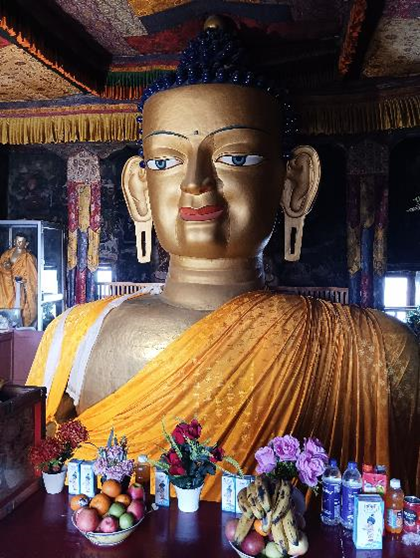
We had our lunch mid-way and then landed at our final
destination of the day, The Leh Palace.
Leh Palace, also known as Lachen Palkar Palace, is a
former royal palace overlooking the city of Leh in Ladakh, India. It was
constructed circa 1600 by Sengge Namgyal. The palace was abandoned when Dogra
forces took control of Ladakh in the mid-19th century and forced the royal
family to move to Stok Palace, where the descendants reside even today (covered
in our visit to Stok Palace). This structure is built against a cliff and
covers 9 floors, overlooking the city of Leh. Its facade resembles that of the Potala Palace in
Lhasa, the capital of Tibet. Leh Palace's roof offers amazing views of the
Ladakh region and the Stok Kangri. We captured a lot of pictures in all angles
from atop this palace.
Archeological
Survey of India (ASI) is maintaining this palace and has done a decent job of
it.
On the 6th
Level, there is an auditorium that keeps running the movie about the importance
of this palace.
Some of the
pics snapped from this palace are below:
Though this is not from the Palace, this map was found at the restaurant where we had lunch.
Temple in the Palace premises.
Monastery behind the Leh Palace.
Entrance to the Leh Palace.
Mr and Mrs Shelare from Mumbai. While here,
we met with a couple (Mr. & Mrs. Shelare) who had come all the way from
Mumbai, on an Aprilia Scooter. When asked ‘why a two-wheeler’ – he said people
can relate to us if we on a two-wheeler rather than a four-wheeler. Mr
Shelare is a photo journalist and has covered many a location across the world.
They have been camping in Leh for over a month now, documenting the local cottage,
village and indigenous industry and they said they still have a lot to cover in
the next month or so. Both their children are married and have their own
families, he said. He added that they have no responsibilities towards their children and are living a carefree life.
Hats off to
this couple!
We met two more youngsters from Karnataka, one a Medical student from Kolar and another an ex-employee of Cognizant now settled with his own business in Mysuru. They reminded me of my carefree college days when I used to go on adventurous trip at my whim. They had come to Leh by bus from Chandigarh and narrated their story of how they had hitchhiked their way to Pangong Tso (lake), which has become a famous attraction for its picturisation in the movie 'Three Idiots' and their ordeal of thumbing a ride back to Leh. Believe me, this is a 4-5 hours journey one way and our jaws dropped when they said that they rode all the return way to Leh, on the back of a Tipper truck. Well, at the cost of not boasting, even I had done such adventures in my prime days but certainly not in such locations where the elements are so hostile.
So much for socialising a this place.
My colleague, Yogiswara, was in awe of this palace and
the scenery all round from the roof top, as he kept repeating that his day was made.
Panoramic views of Leh town from atop
the Leh Palace:
We were supposed to visit the Hall of Fame and the
Sound and Light show but had to defer this as we had to plan for the next day’s
event, the reason of our visit. So, we returned to our hotel for the night.
Day 4:
The next day was the Mock Exercise on Earthquake,
across Leh and Kargil districts in the morning and the second session at Kargil
district on flash floods that went on till late in the evening. These sessions
went on well and we monitored sitting at the Command-Control Centre, very close
to our hotel. That night we savoured the local delicacy Thukpa (a soup with
variety of vegetables and noodles) and relished it so thoroughly that we had it
the next night for dinner too.
Day 5:
Our last full day at Leh. We had an early day as we
regrouped for a de-briefing session at the Command-Control Centre. After a
couple of hours session, we had the rest of the day for ourselves. Before we
ventured out, we had a good snooze. Having charted out our itinerary for the
rest of the day, we started off to the Hall of Fame by around 4:30 pm. The
entrance is luxuriously anointed with various ammunition in addition to
armoured personal carriers and recoil-less guns. It is a very fine gesture to
have Buddha’s statue welcoming the viewers to this amazing memorial.
Memorial with the Flag and all Colours unfurled!
Silhouette of the hill in the background against the setting sun!
Memorial awash with the fading sunlight!



Glimpse of the Hall of Fame at night.
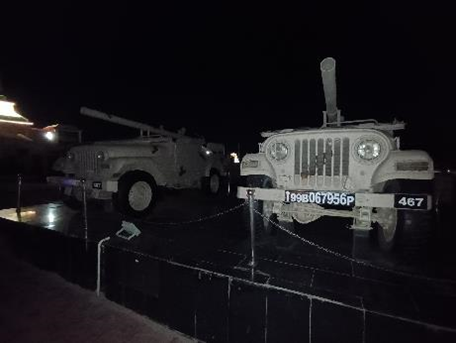

Note on Hall of Fame:
Source: https://www.lehladakhindia.com/hall-of-fame/
Hall of Fame is a museum constructed by the Indian
Army in memory of the brave Indian soldiers who laid down their lives defending
our country in the Indo-Pak wars. The Hall of Fame Museum is located on the
Leh-Kargil Road, about 4 kms from the city of Leh. It stands as a reminder of
the great sacrifices made by our soldiers to ensure the safety and security of
our country.
The Hall of Fame
Museum, consisting of two stories, is divided into various sections which
contain several displays. In the upper floor, there is a section named OP Vijay
Gallery. Here, you can see the various kinds of weapons used in the Kargil war,
along with the various arms and ammunition captured by the Indian Army during
the war. On the same floor, in yet another section, various kinds of apparel
and amenities used by the Indian Army in the Siachen region have also been
displayed. Some of these show the pictures of army posts on the glacier, living
accommodation of the troops and the training process of the troops on ice
walls, besides others.
If you head
to another section of the same ground floor, you will find the pictures of
Kargil War on the walls. The pictures provide an elaborate and fascinating
account of how the Indian Army fought the war. There is also a wall named “Lest
We Forget” which displays the photographs of those soldiers who laid down their
lives defending our nation. It’s a very moving sight to come across and reminds
you of the enormous sacrifices made by our soldiers to ensure that our country
is safe and secure from foreign aggression at all times.
On the same
ground floor, there is also a projection room where you can watch a documentary
on “Operation Vijay”. One particular moving sight on this floor meets
you in the form of a frame on a wall named “The Last Post”. This was the letter
written by Captain Vijayant Thapar to his parents some days before he attained
martyrdom. Upon reading the letter, you are overcome by a profound sense of
grief and pride, while your eyes well up with tears. You are reminded of the
bravery and exemplary courage displayed by our soldiers while performing their
service in the line of duty.
On the
ground floor, there is a section which displays the history, culture and other
associated facts with Ladakh. It also consists of a souvenir shop where you can
buy several items including t-shirts, caps, coffee mugs and pashmina shawls,
besides others. You can also get a photo shoot clad in the Ladakhi attire in
the photo shop and get the prints after paying a small amount of money.
While we hastened to complete our visit to the
Hall of Fame, due to time, we were to return again after a couple of hours to
this place to watch the Light and Sound show. So, we sneaked a visit to Pathar
Sahib Gurudwara, which was around 19 kms away.
Pathar Sahib Gurudwara:
Source:
https://www.incredibleindia.org/content/incredible-india-v2/en/destinations/leh-ladakh/gurudwara-pathar-sahib.html
It is popularly believed that during 1515-18 when Guru
Nanak was returning to Punjab via Srinagar, after travelling to Sikkim, Nepal
and Tibet, he had rested at this place. When he reached Leh he sat here to
meditate. While here, Guru Nanak vanquished a demon who was trying to crush him
with a boulder.
Legend: During his third Udasi (religious journey),
Guru Nanak stopped in the region to meditate while traveling from Sikkim,
Nepal, and Tibet to Punjab. While meditating, a demon threw a large boulder at
him from a nearby hill in an attempt to harm him. However, the boulder softened
when it touched the Guru and he was unharmed. The gurudwara is believed to have
been built in 1517 to commemorate this event and houses a sacred boulder that
is said to have the Guru's body imprinted on it.

The hill from where the demon threw the Pathar (Rock) at Guru Nanak ji and the impression of Guru Nanak ji on the softened rock.
We saw a few cycles with identifying
boards of the riders from Andhra Pradesh and Maharashtra. Quite brave ones as I
remembered my own bravado during my hay days.


We couldn’t wait for the langar but we had delicious
halva, as prasad.
Light and Sound Show at the Hall of Fame:
At the stroke of 8:00 in the evening, there is a light
and sound show at this venue, with a 6-dimension laser show depicting the
battles won and sacrifices of our brave soldiers at various encounters with the
enemy forces, from both sides. This awe-inspiring show of 45 minutes is sure to
give goosebumps and bring tears in the eyes of spectators. It concludes, as
expected, with the singing of the National Anthem and the vibe it creates must
be seen to be believed.
Photography/Videography is strictly prohibited for the
duration of the show and hence I haven’t posted any pics of the same.
This pic was
taken before the show.
Just to mention, on this day there was a tragic
accident in Leh in which 7 teachers were killed as the bus they were travelling
fell into a 200 ft gorge and many were injured. The markets in Leh were closed
in a gesture to mourn the dead and support the bereaved. I had planned to bring
some locally grown small apples and apricots but couldn’t go to the market.
Yet, our driver was insistent that he could find some
vendors and surely, there they were. I could get some apples and apricots that
concluded my trip and am I glad that I could accomplish all that I could see
and do, given the sparse timeframe? Indeed!
The weather had been cold during the morning, evening and night but warm during the daytime. I had carried a few warm clothes that weren't used at all.
We had ordered Thukpa again for our dinner and
probably we relished this more than any dish in Leh. As we retired to our rooms
to hurry up with the packing. We had our flight to New Delhi at 8:30 am next
day and we had to check-in our luggage through to Bengaluru and get a physical boarding
pass as Digi-Yatra is not yet available here. Our reliable driver Thongso was
at our door by 6:00 am and off we went to the airport.
The hotel staff was very hospitable, especially
Mangel, who took care of, our sumptuous breakfast, lunch and dinner, but
even our simplest of needs. The kitchen staff knew our requirements to the T and dished out what we wanted.
Thanks to you all and hope to see you again, albeit
leisurely.
Note to the first-time travelers to this and other
such places of high altitude:
- Take a day or two off on arrival at
such places, to acclimatise yourselves to the lack of oxygen.
- Drink lots of water – keep hydrated
(no mixing of Alcohol with it).
- You will puff and pant at slight strain
while walking on an incline or climbing steps. This is normal. Take breaks and don’t
be embarrassed to do so.
- Most of the places of tourist
interest; involve climbing of steps, gradients, etc. Be prepared.
- Lack of oxygen also induces sleepless
nights. Don’t worry if you can’t get sleep till the early hours of the
morning. This is normal.
- Buy stuff here as souvenirs and don't bother to bargain - a normal practice. The traders in Leh are very uncomfortable when it comes to bargaining.
- Another thing to be aware of is that most of the stuff comes from Srinagar, New Delhi, etc. Not much is made here, I understand.
- Food takes a longer time to cook due to the altitude and gets cold in no time, if not consumed hot and fresh from the stove. We were told by the hotel manager to order lunch or dinner, well in advance. Breakfast was complimentary and included in the tariff (obviously, there is no free lunch!). The food though, was a bit on the blander side and lacked the spices that we are used to. We supplemented this by consuming a lot of green chillies, along with our food.
- Avoid walking during late nights and
in the wee hours of the morning (Particularly Leh) due to plenty of stray
dogs. They say that the dogs don’t harm you but the dogs don’t know that
they shouldn’t harm us!
Looking forward to my next trip in the next few months, albeit to different places, hopefully and God willing!
I, sincerely thank you for going through a rather
elaborate travelogue and would request you to drop in a line or two with your
comments. This will help improve my expression for future write-ups.
Jai Bharath!!































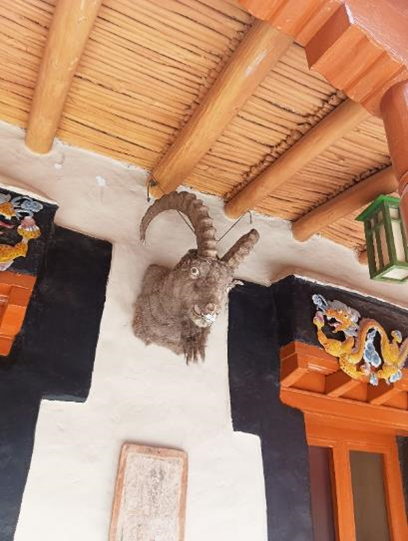

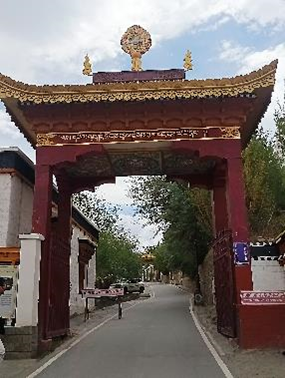
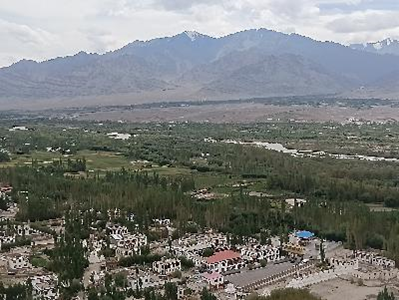





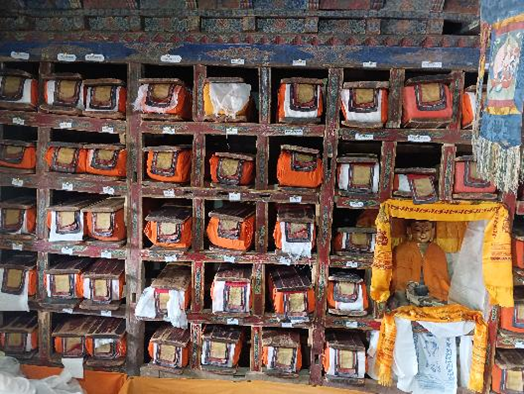
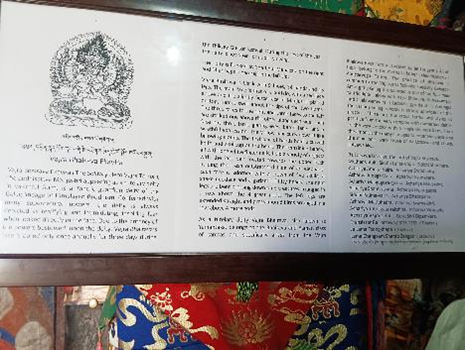






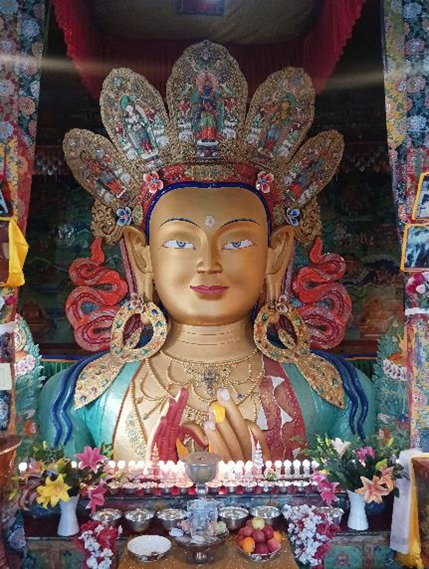

















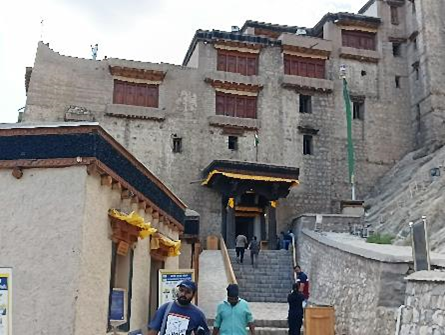













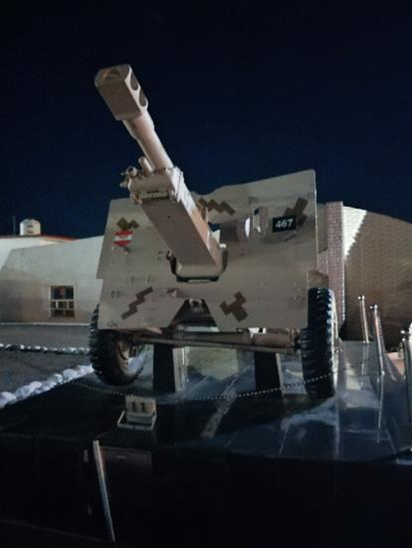













.jpeg)

.jpg)